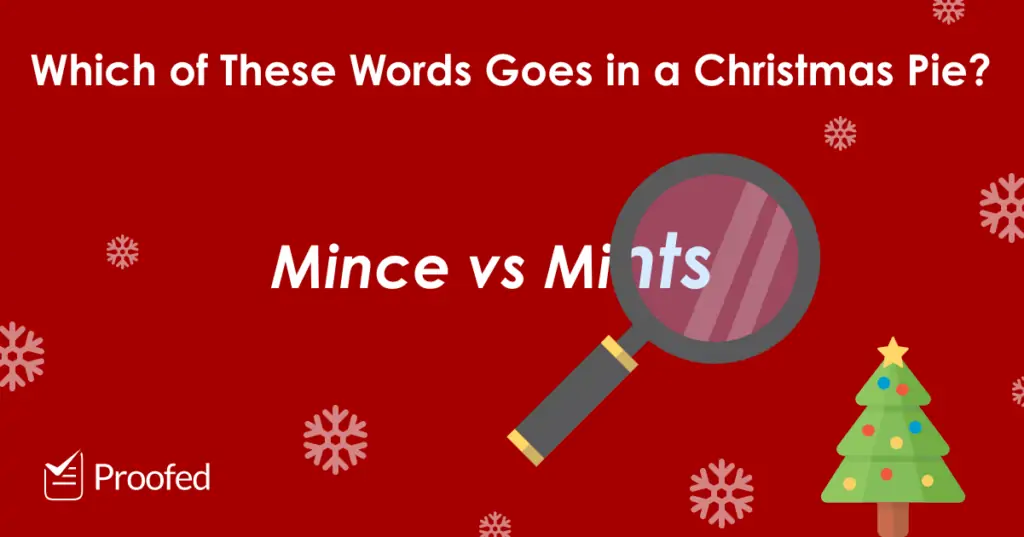Happy Christmas! Our present to you? Some homophones! What do you mean you wanted a puppy? Oh well. For now, all we have is vocabulary advice on two words you might see at this time of year: mince and mints.
So, what do they mean? How can you avoid errors when using them? And what exactly is a mince pie anyway? Let’s take a look.
Mincemeat and Mince (Chopped Up Fruit or Meat)
In the US, “mince” refers to finely chopped meat. For example:
Spaghetti bolognese is made with beef mince.
And while they do have this meaty “mince” in the UK, a “mince pie” is a tasty Christmas treat without any meat in it. The “mince” in these pies is actually mincemeat, a sweet, spicy mixture of dried fruits:
We spooned the mincemeat into the pies.
This is because “meat” used to be a term for all food, not just animal flesh, so “minced meat” was simply “chopped food.” And while mince pies have not caught on in the US, they are popular in other parts of the world.

(Photo: darianstibbe/Pixaba
As a verb, meanwhile, mince has two distinct meanings:
Find this useful?
Subscribe to our newsletter and get writing tips from our editors straight to your inbox.
- To cut food into fine pieces (e.g., We minced the beef for dinner)
- To walk with small, dainty steps (e.g., He minced across the room)
Finally, we have a much older usage of “mince” that referred to using polite language. This is where the phrase “don’t mince your words” comes from, which means “don’t moderate your words.”
Mints (Plural of Mint)
As a noun, “mints” is the plural of “mint.” In a festive context, this will usually refer to the herb used to flavor things (e.g., peppermint). You might have a mint candy cane at Christmas, for example.

But a “mint” can also be somewhere that makes money, in particular coins:
The United States Mint produces all coins in the USA.
This second sense of “mint” has a related verb use (i.e., to produce coins), which would become “mints” in the present tense third person. It can also be used as an adjective meaning “as new” (e.g., mint condition), but this form of the word is never spelled with an “s” at the end.
Summary: Mince or Mints?
These words sound similar, but you’ll only want one of them in a pie:
- In most settings, mince as a noun refers to finely chopped meat. As a verb, it can mean either “cut something finely” or “walk daintily.”
- At Christmas in the UK, mince refers to mincemeat. This is a sweet, spicy mixture of dried fruits used to fill mince pies, but does not contain meat!
- Mints is usually the plural form of “mint” (a herb or peppermint sweet).
We hope this has helped you understand “mince” and “mints”! But if you’re going to correct a family member today, please do so with festive cheer in your heart. Or maybe leave it for tomorrow!



